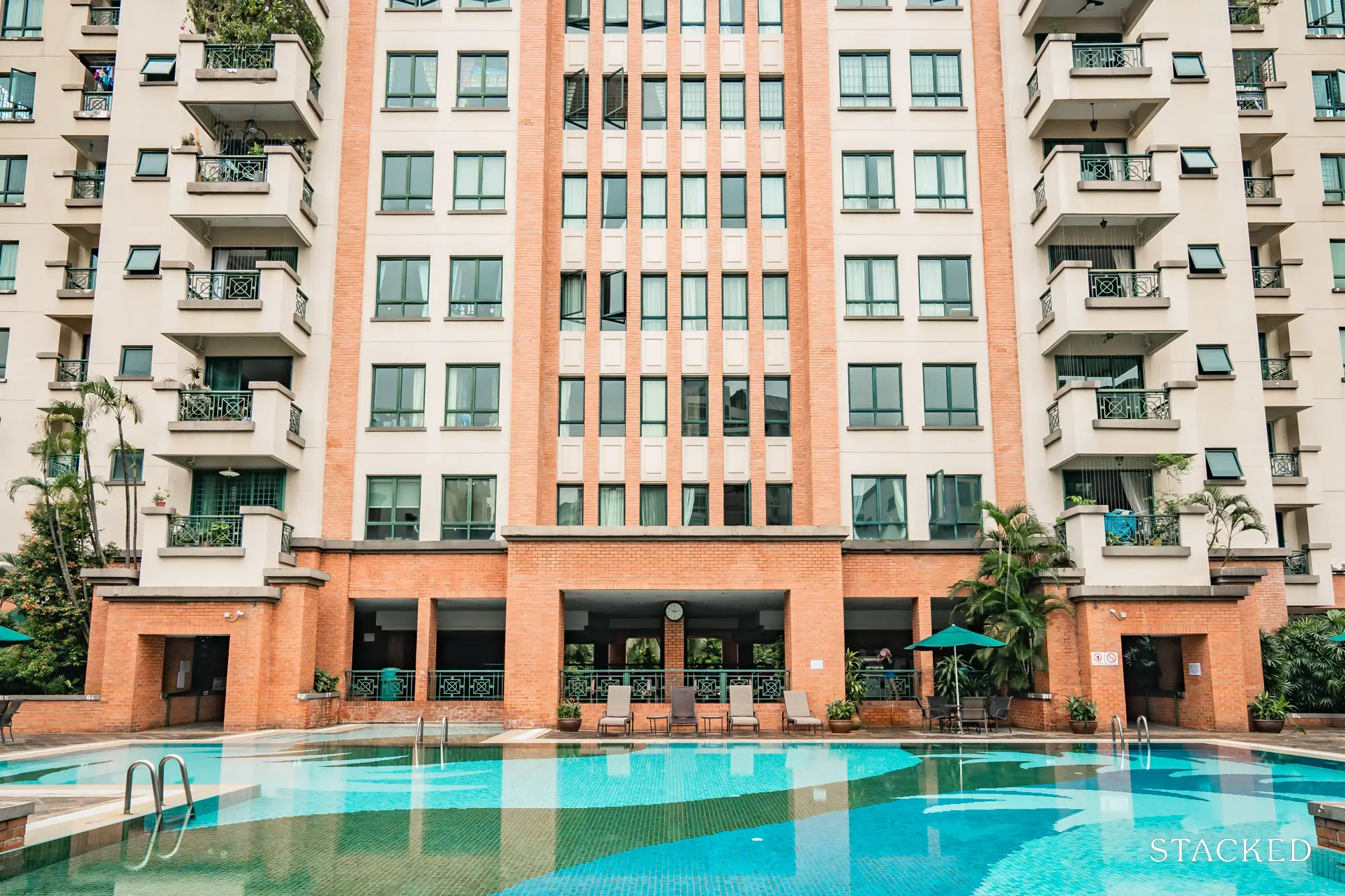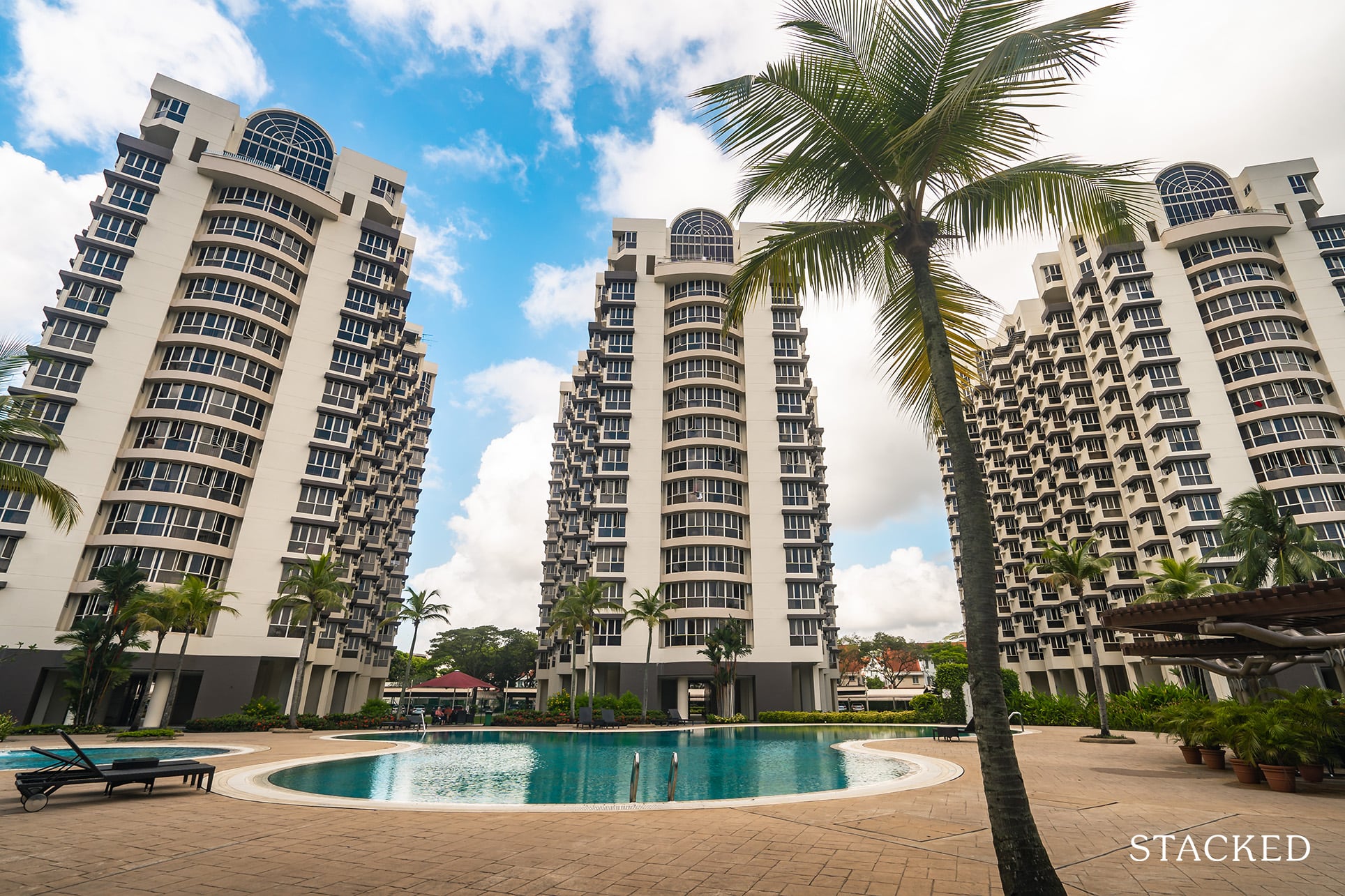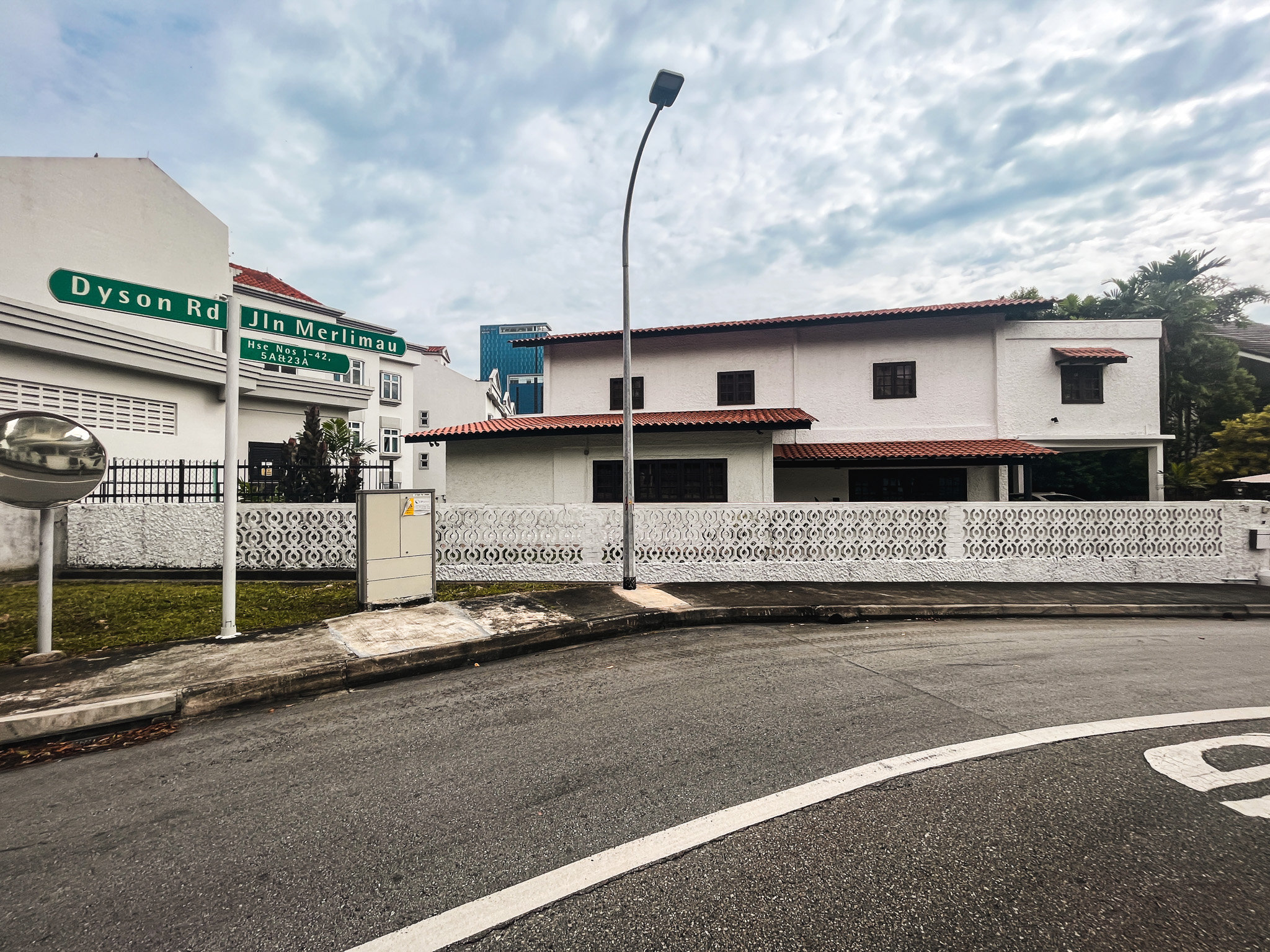Are Old Freehold Condos Still Profitable In Singapore?

Get The Property Insights Serious Buyers Read First: Join 50,000+ readers who rely on our weekly breakdowns of Singapore’s property market.
A seasoned content strategist with over 17 years in the real estate and financial journalism sectors, Ryan has built a reputation for transforming complex industry jargon into accessible knowledge. With a track record of writing and editing for leading financial platforms and publications, Ryan's expertise has been recognised across various media outlets. His role as a former content editor for 99.co and a co-host for CNA 938's Open House programme underscores his commitment to providing valuable insights into the property market.
In theory, freehold condos should continue to appreciate well over the years. One common argument you’ll hear, for example, is that because developers won’t need to top up the lease, freehold projects have better en-bloc value and potential. But there’s growing skepticism these days, as some ponder whether maintaining a condo for 40+ years is truly viable – and with new projects appearing nearby, could a very old condo still appreciate well, even if it’s freehold? We took a look:
Average freehold condo prices based on age:
| Year/Age | Less Than 10 Years Old | Less Than 20 Years Old | Less Than 30 Years Old | Less Than 40 Years Old | 40 Years Or More | Grand Total |
| 2014 | $1,609 | $1,249 | $1,212 | $1,194 | $1,003 | $1,510 |
| 2015 | $1,588 | $1,222 | $1,124 | $1,148 | $1,029 | $1,441 |
| 2016 | $1,663 | $1,210 | $1,100 | $1,140 | $1,051 | $1,475 |
| 2017 | $1,705 | $1,235 | $1,167 | $1,180 | $1,172 | $1,505 |
| 2018 | $1,821 | $1,345 | $1,238 | $1,320 | $1,264 | $1,620 |
| 2019 | $2,118 | $1,444 | $1,308 | $1,342 | $1,279 | $1,804 |
| 2020 | $1,963 | $1,423 | $1,290 | $1,359 | $1,169 | $1,695 |
| 2021 | $2,057 | $1,621 | $1,384 | $1,445 | $1,364 | $1,816 |
| 2022 | $2,280 | $1,741 | $1,507 | $1,625 | $1,622 | $1,999 |
| 2023 | $2,459 | $1,846 | $1,617 | $1,671 | $1,567 | $2,117 |
| 2024 | $2,427 | $1,873 | $1,702 | $1,627 | $1,592 | $2,000 |
| Grand Total | $1,944 | $1,492 | $1,346 | $1,375 | $1,381 | $1,730 |
This shows the average price per square foot of a freehold condo, upon each decade it ages. For those who are interested in how it measures up versus leasehold, you can compare it to this article.
Based on the linked article, leasehold condos that are 10 years old or under average $1,410 psf, which is about 31.8 per cent lower than a freehold equivalent.
At 40+ years old, the average leasehold condo is around $997 psf, which is about 32.9 per cent lower than a freehold counterpart. This is a very slim difference, and suggests that leasehold may not fall as drastically as expected versus freehold; not even after 40+ years.

Another interesting point here is that, if you’re willing to settle for a condo that’s 30+ years old, you may be looking at a quantum of $1.6 million to $1.7 million for a 1,000 sq. ft. (roughly three-bedder) unit.
So a freehold, family-sized condo unit may still be within reach for upgraders in 2024, if they can bear with an ageing property located further away.
Let’s look at how much freehold condos appreciate on average, based on age:
More from Stacked
We Analysed 8 Years Of 1-Bedroom Condo Data In Central Singapore: Here’s What Investors Should Know
In this Stacked Pro breakdown:
| Year/Age | Less Than 10 Years Old | Less Than 20 Years Old | Less Than 30 Years Old | Less Than 40 Years Old | 40 Years Or More |
| 2014 | |||||
| 2015 | -1.33% | -2.12% | -7.27% | -3.85% | 2.65% |
| 2016 | 4.75% | -1.02% | -2.20% | -0.69% | 2.17% |
| 2017 | 2.50% | 2.13% | 6.14% | 3.53% | 11.47% |
| 2018 | 6.84% | 8.91% | 6.11% | 11.83% | 7.83% |
| 2019 | 16.32% | 7.33% | 5.65% | 1.63% | 1.19% |
| 2020 | -7.35% | -1.47% | -1.37% | 1.29% | -8.61% |
| 2021 | 4.81% | 13.96% | 7.26% | 6.31% | 16.69% |
| 2022 | 10.84% | 7.38% | 8.89% | 12.52% | 18.89% |
| 2023 | 7.84% | 6.05% | 7.27% | 2.82% | -3.39% |
| 2024 | -1.31% | 1.46% | 5.28% | -2.66% | 1.64% |
| Grand Total | 4.39% | 4.26% | 3.58% | 3.27% | 5.05% |
| Total Volume | 33277 | 14368 | 7136 | 2195 | 569 |
The condos seem to fare better in the first two decades (perhaps because the condo isn’t considered “very old” yet), or toward the 40+ year mark, when we may be seeing a long holding period show its rewards.
Average percentage gains or losses during transactions
| Row Labels | Less Than 10 Years Old | Less Than 20 Years Old | Less Than 30 Years Old | Less Than 40 Years Old | More Than 40 Years Old | Grand Total |
| 2014 | 7.8% | 20.7% | 26.4% | 13.0% | 31.3% | 11.0% |
| 2015 | 11.9% | 24.6% | 29.1% | 31.7% | 46.0% | 16.4% |
| 2016 | 14.6% | 31.0% | 31.3% | 35.3% | 21.5% | 20.3% |
| 2017 | 15.6% | 29.1% | 31.8% | 34.4% | 24.4% | 21.0% |
| 2018 | 11.7% | 21.1% | 23.8% | 34.7% | 28.9% | 16.0% |
| 2019 | 13.7% | 26.4% | 33.3% | 33.1% | 24.7% | 19.5% |
| 2020 | 18.4% | 30.6% | 34.5% | 32.8% | 34.2% | 24.6% |
| 2021 | 13.7% | 24.0% | 24.4% | 7.5% | 32.1% | 18.9% |
| 2022 | 8.1% | 33.3% | 12.4% | 6.3% | 15.0% | |
| 2023 | 1.5% | 4.1% | 2.5% | |||
| Grand Total | 12.5% | 25.9% | 29.0% | 31.8% | 26.9% | 17.5% |
The highest percentage gains seem to come from selling between the 30 to 40-year mark, but not after. Similar to leasehold counterparts, profits may weaken past the 40-year mark due to financing issues. Banks tend to lower the maximum loan quantum at that point, which necessitates a higher cash outlay; and this may in turn exert downward pressure on prices.
Looking at performance by District
Profitability
| Year/District | D1 | D2 | D3 | D4 | D5 | D7 | D8 | D9 | D10 | D11 | D12 | D13 | D14 | D15 | D16 | D17 | D18 | D19 | D20 | D21 | D23 | D26 | D27 | D28 | Grand Total |
| 2014 | 7% | 8% | 6% | 12% | 7% | 5% | 12% | 11% | 9% | 14% | 7% | 17% | 17% | 5% | 4% | 10% | 8% | 18% | 21% | 1% | 9% | 14% | 11% | ||
| 2015 | 6% | 31% | 21% | 9% | 13% | 20% | 14% | 12% | 18% | 13% | 18% | 27% | 17% | 9% | 11% | 11% | 26% | 21% | 26% | 16% | 23% | 16% | |||
| 2016 | 31% | 9% | 21% | 7% | 16% | 16% | 22% | 20% | 18% | 13% | 12% | 23% | 25% | 20% | 15% | 14% | 33% | 29% | 33% | 27% | 24% | 20% | |||
| 2017 | 31% | 8% | 33% | 11% | 22% | 15% | 17% | 21% | 18% | 20% | 16% | 14% | 24% | 30% | 27% | 17% | 20% | 30% | 31% | 33% | 47% | 35% | 21% | ||
| 2018 | 5% | 13% | 14% | 13% | 12% | 15% | 15% | 14% | 16% | 14% | 17% | 19% | 23% | 31% | 17% | 17% | 25% | 21% | 11% | 38% | 34% | 16% | |||
| 2019 | 9% | 21% | 6% | 18% | 22% | 9% | 19% | 21% | 13% | 32% | 17% | 22% | 28% | 21% | 27% | 17% | 26% | 26% | 39% | 32% | 20% | ||||
| 2020 | 13% | 22% | 25% | 24% | 9% | 27% | 19% | 25% | 25% | 23% | 28% | 24% | 35% | 26% | 15% | 22% | 33% | 41% | 44% | 25% | |||||
| 2021 | 10% | 33% | -15% | 9% | 8% | 18% | 12% | 12% | 16% | 14% | 27% | 27% | 43% | 15% | 19% | ||||||||||
| 2022 | 3% | 16% | 37% | 4% | 7% | 15% | 11% | 15% | |||||||||||||||||
| 2023 | 0% | 2% | -2% | 10% | 3% | ||||||||||||||||||||
| Grand Total | 23% | 8% | 21% | 9% | 17% | 7% | 12% | 12% | 19% | 16% | 15% | 18% | 13% | 21% | 24% | 20% | 8% | 15% | 14% | 26% | 26% | 26% | 29% | 24% | 18% |
Volume
| Year/District | D1 | D2 | D3 | D4 | D5 | D7 | D8 | D9 | D10 | D11 | D12 | D13 | D14 | D15 | D16 | D17 | D18 | D19 | D20 | D21 | D23 | D26 | D27 | D28 | Grand Total |
| 2014 | 1 | 10 | 7 | 58 | 43 | 98 | 109 | 66 | 72 | 5 | 109 | 163 | 18 | 29 | 5 | 74 | 12 | 52 | 28 | 5 | 4 | 6 | 974 | ||
| 2015 | 4 | 1 | 33 | 27 | 76 | 116 | 60 | 62 | 24 | 71 | 163 | 18 | 26 | 3 | 64 | 22 | 46 | 22 | 8 | 2 | 6 | 854 | |||
| 2016 | 10 | 11 | 23 | 1 | 28 | 76 | 121 | 62 | 45 | 10 | 67 | 151 | 13 | 16 | 49 | 23 | 44 | 28 | 8 | 7 | 10 | 803 | |||
| 2017 | 2 | 18 | 9 | 4 | 42 | 30 | 100 | 162 | 72 | 85 | 25 | 97 | 199 | 23 | 35 | 63 | 10 | 68 | 36 | 11 | 4 | 4 | 1099 | ||
| 2018 | 6 | 7 | 38 | 20 | 75 | 95 | 55 | 96 | 10 | 87 | 141 | 15 | 21 | 1 | 55 | 7 | 39 | 25 | 5 | 3 | 2 | 803 | |||
| 2019 | 19 | 4 | 2 | 15 | 3 | 28 | 34 | 26 | 27 | 6 | 40 | 89 | 8 | 18 | 23 | 6 | 11 | 12 | 3 | 1 | 375 | ||||
| 2020 | 2 | 1 | 9 | 4 | 15 | 20 | 11 | 18 | 4 | 21 | 34 | 2 | 10 | 12 | 2 | 27 | 14 | 3 | 1 | 210 | |||||
| 2021 | 1 | 1 | 1 | 3 | 5 | 11 | 2 | 5 | 1 | 6 | 21 | 4 | 1 | 3 | 65 | ||||||||||
| 2022 | 1 | 2 | 2 | 2 | 1 | 3 | 1 | 12 | |||||||||||||||||
| 2023 | 1 | 2 | 1 | 1 | 5 | ||||||||||||||||||||
| Grand Total | 3 | 56 | 43 | 19 | 222 | 1 | 157 | 474 | 672 | 357 | 410 | 85 | 499 | 965 | 97 | 159 | 9 | 341 | 82 | 291 | 165 | 43 | 21 | 29 | 5200 |
Unfortunately, this isn’t too useful, because freehold properties tend to cluster heavily in some areas but are very rare in others.
In Districts 9 and 10 for example (the Orchard to Bukit Timah areas), it’s more common to find older freehold rather than leasehold properties; conversely, District 25 (Woodlands) doesn’t even appear, as almost everything there is leasehold.
For some of these districts, the transaction volume is so low that the “average” gains don’t mean much, and prices can be volatile. So the gains in Districts like 9 or 10 may provide a more accurate depiction of the area (we’d be careful with District 15, as the area includes many boutique freehold condos that can be quite volatile).
When is the freehold premium worth paying?
In general, the freehold premium (about 15 to 20 per cent higher than a leasehold) only starts to pay for itself much later on. If you’re going to sell within a short period like 10 years, for example, the freehold status doesn’t really mean much; but if you’re selling only in 30+ years, then it may prove its worth without the lease decay.

Due to the long holding period, a concern for homeowners is how well the condo is maintained. This could be an issue in very big developments with lots of facilities – you have to question if the multiple swimming pools, landscaped areas, BBQ pits, etc. will still look good after you hold for so long. Freehold status protects your property from lease decay, but not from declining condo management.
For more on the Singapore private property market, as well as reviews of new and resale condos alike, follow us on Stacked. If you’d like to get in touch for a more in-depth consultation, you can do so here.
Ryan J. Ong
A seasoned content strategist with over 17 years in the real estate and financial journalism sectors, Ryan has built a reputation for transforming complex industry jargon into accessible knowledge. With a track record of writing and editing for leading financial platforms and publications, Ryan's expertise has been recognised across various media outlets. His role as a former content editor for 99.co and a co-host for CNA 938's Open House programme underscores his commitment to providing valuable insights into the property market.Read next from Property Investment Insights

Property Investment Insights How A Once “Ulu” Condo Launched In 1997 Became A Top Performer

Property Investment Insights This 698-Unit Ang Mo Kio Condo Launched At The Wrong Time — And Still Outperformed Peers

Property Investment Insights These Resale Condos In Singapore Were The Top Performers In 2025 — And Not All Were Obvious Winners

Property Investment Insights How A 944-Unit Mega-Condo In Pasir Ris Ended Up Beating The Market
Latest Posts

On The Market Here Are The Cheapest 4-Room HDB Flats in Central Singapore You Can Still Buy From $490K

Editor's Pick Should We Buy An Old 99-Year Leasehold Condo To Live In: Will It’s Value Fall When The Lease Runs Out?

Editor's Pick I Reviewed A New Launch 4-Bedroom Penthouse At Beauty World

Property Market Commentary When Renting In Singapore Is The Smarter Move — And Buying Can Wait

Editor's Pick Why Singaporean Families Are Looking At This Landed Enclave From Around $4M

Singapore Property News Lentor’s First Condo Is Complete — The Early Profits May Surprise You

Editor's Pick A Wave Of New HDB Resale Supply Is Coming In 2026: Here’s Where To Find Them

Property Advice We Own A $800K 1-Bedder And A $1.1M 3-Bedder: Is It Possible To Upgrade To A 4-Bedder Condo?

On The Market These Are Some Of The Cheapest 5-Room HDB Flats Left In Central Singapore

Singapore Property News $281.2M in Singapore Shophouse Deals in 2H2025 — But That Number Doesn’t Tell the Full Story

Property Market Commentary 5 Key Features Buyers Should Expect in 2026 New Launch Condos

Editor's Pick What “Lucky” Singaporean Homebuyers Used To Get Away With — That You Can’t Today

Singapore Property News CapitaLand–UOL’s $1.5 Billion Hougang Central Bid May Put Future Prices Above $2,500 PSF

Singapore Property News Why New Condo Sales Fell 87% In November (And Why It’s Not a Red Flag)

Editor's Pick We Toured A Quiet Freehold Landed Area Near Reputable Schools — Where Owners Rarely Sell


